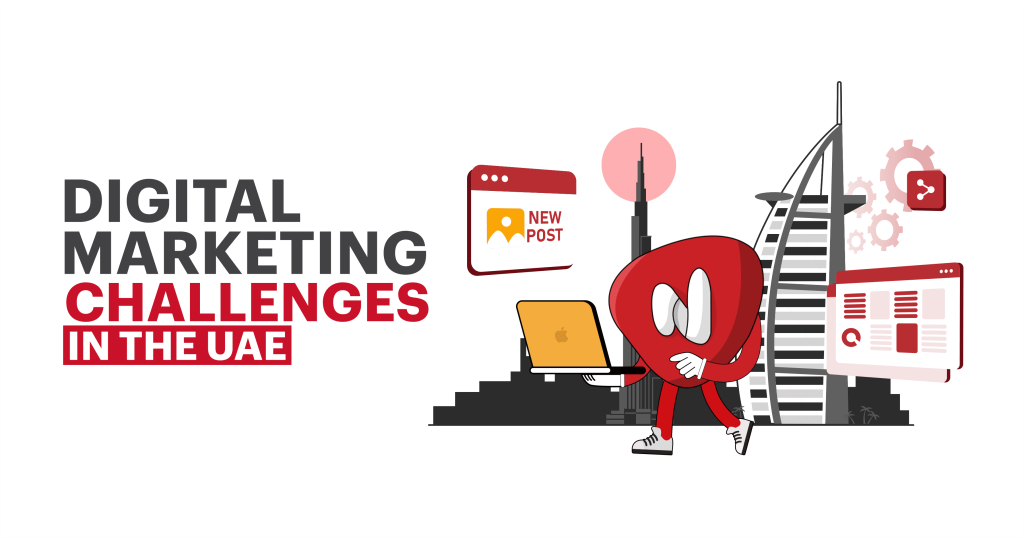
“Know your enemy and know yourself, and you can fight a hundred battles without disaster.” – Sun Tzu If you want to succeed online, the key is to really know your competitors—who they are, what they do, and what their audience likes. That’s what competitive analysis is all about.
And if you need practical support, working with a digital marketing agency Abu Dhabi can provide you with local expertise and advanced tools to help you build stronger strategies. It helps you avoid marketing mistakes and gain a deeper understanding of your market. I’ll also explain the difference between Retargeting Vs Remarketing, and how to use them effectively.
What is a competitive analysis?
Do you know what a competitive analysis means? It means knowing everything about your competitors in detail: who they are, their strengths and weaknesses, their strategies, and even their position and share in the market.
When you do this analysis, it gives you a clear map of all that, and also shows you what has worked for them and where the gaps are that you can enter, take advantage of, and stand out. That’s why this analysis helps you be ready for any market challenge and build a strong strategy.
What to include in a competitive analysis?
When you do a competitive analysis, you’re not just collecting data. The main goal is to really understand your market, study your competitors—their strengths and weaknesses—and discover new opportunities, create a strong competitive advantage, make well-planned and thoughtful decisions, and always stay one step ahead. That’s why I’ve gathered the most important elements you should pay attention to in your analysis.
These are some key elements that should be included in your competitive analysis:
- Identify your competitors: You need to know who your direct and indirect competitors are.
- It’s important to know their strengths and weaknesses and use them to your advantage.
- Understand their market position and share, and see how they showcase themselves in front of customers.
- Understand their marketing strategies and the tactics they use.
- Be aware of their vision, who their audience is, and how they engage with them.
- Keep track of them digitally: monitor their SEO performance on their website and their activity on social media platforms
- Look for their competitive advantage—what makes them stand out—and then work on making yourself stand out even stronger.
Competitive analysis example: “Levi Strauss and Jeans:”
Later, Levi Strauss teamed up with a man named Jacob Davis. They added metal rivets to strengthen the pockets, which was the opportunity they had been looking for.
They focused on quality and created new, unique designs that made jeans stand out from any other product in the market.
Thanks to their hard work and careful study of the competition, jeans became a global product, and Levi’s turned into a world-famous brand. The secret behind all this was their deep understanding of the market and competitive analysis before launching.
Drawbacks of competitive analysis:
These are the main drawbacks of competitive analysis:
- it takes a lot of time and effort, and conducting a thorough analysis consumes significant resources.
- You won’t always find all the information about your competitors, which can make the analysis incomplete or not 100% accurate.
- If you focus too much on your competitors, you might end up copying them instead of innovating.
- The market changes quickly, so your information can become outdated and useless if you don’t update your analysis regularly.
- Analysis alone isn’t enough; it needs to be connected to a clear strategy and thoughtful decision-making.
Further tips for conducting a competitive analysis:
I’m going to share 5 important steps and tricks to follow when doing your competitive analysis — and you’ll enjoy the process!
- Gather data from reliable sources, like official websites and verified social media accounts.
- The market changes fast, so stay consistent and conduct your competitive analysis regularly. Don’t just do it once — always stay one step ahead.
- Look for ideas and insights that you can actually apply to improve your strategy.
- Check out your competitors’ strengths as a source of inspiration, but don’t copy them literally — focus on standing out and being unique.
- Write down and document all your findings. Organize every step of your research — this will help you track your progress, make informed decisions, and adjust your strategy whenever needed.
Competitive Analysis Templates:
“Plans are nothing; planning is everything.” – Dwight D. Eisenhower
Here, the author emphasizes the importance of organizing information and using competitive analysis templates. It’s not just about structuring the data collection process — the more organized your analysis is, the stronger and more effective your decisions will be. This is especially important for a digital marketing agency in Abu Dhabi, where avoiding marketing mistakes can make a big difference.
We can say that there are several competitive analysis models, such as Porter’s Five Forces, SWOT analysis, digital analysis templates, and the Co-opetition concept. But to keep things simple, I’ve selected the two most popular models and we’ll explain them in detail.
Since competitive analysis templates are so crucial, I’ve gathered the most essential ones and I’ll explain them in a simple and practical way. You’ll also see how they can help you apply Retargeting Vs Remarketing strategies more effectively.
Five Forces Model – Michael E. Porter:
So, we can say that Michael Porter divided the forces in the competitive environment into five main forces:
the threat of new entrants, the bargaining power of suppliers, the bargaining power of customers, the threat of substitute products, and the rivalry among existing competitors.
This model helps you understand the competition, identify opportunities, and recognize threats more clearly and accurately.
SWOT Analysis – Albert Humphrey:
SWOT analysis is one of the easiest models, focusing on four main points: strengths, weaknesses, opportunities, and threats. This analysis lets you see the complete picture of your company or project and plan strategically. Whether you want to strengthen your strengths, take advantage of opportunities, or anticipate potential threats and prepare for them, SWOT helps you make informed decisions.
What is a competitive analysis in digital marketing?
If we talk about the definition, we can say that competitive analysis is the process of researching and evaluating your competitors’ online presence, strategies, and performance. Through it, you can understand what your competitors are doing, what you need to improve, and the opportunities or gaps your brand can leverage to compete effectively in the market.
This analysis usually covers several areas, such as SEO, social media activity, paid advertising campaigns, and content strategy.
When all these aspects work together, it enables digital marketing agencies, startups, and brands to avoid marketing mistakes, discover new opportunities, and improve their marketing strategies to capture a larger share of the market and stay ahead of the competition.
Why you should do a competitive analysis in digital marketing?
How to Do a Competitive Analysis is important and essential for any company or brand because it helps you understand your competitors well, discover opportunities, avoid marketing mistakes, and improve your strategy so you can capture a larger share of the market and stay ahead.
What are the types of competitive analysis?
The types of competitive analysis are many and differ depending on what exactly you want to know, and here I’ll tell you the main types briefly.
Here, I simplified the topic and divided the types of competitive analysis into two perspectives:
In terms of main focus:
Broad strategic: Five Forces (Michael Porter) – SWOT (Albert Humphrey).
Digital-specific: Digital analysis (SEO, content, ads).
Market relations: Direct/indirect competitor analysis (Philip Kotler) + Co-opetition (Adam Branden burger & Barry Nalebuff).
In terms of practical use:
To determine the company’s position in the market: Five Forces, SWOT.
To develop digital marketing strategies: Digital analysis.
To understand competitors and their relationships: Direct/indirect analysis, Co-opetition.
This way, the types are clearly shown under each perspective, making the topic simpler, organized, and easy to follow.
Social media competitor analysis:
When you start analyzing competitors on social media, you monitor and study their activity on platforms like Facebook, Instagram, LinkedIn, Twitter, or any other platform they use and get engagement on. Your goal is to find out what’s working best for them, why it’s getting good engagement, and what opportunities you can take advantage of to strengthen your own digital presence on these platforms.
To do this effectively, you need to follow a structured process, and I’ll walk you through the steps in order and briefly.
Here are the steps:
- First, identify your direct and indirect competitors.
- Second, review their content and see the type and style they use.
- Next, analyze engagement: check the number of likes, shares, and comments, and compare your performance with your competitors in terms of reach, interaction, and follower growth.
- Finally, identify opportunities and take advantage of them for your benefit.
FAQs:
Q: Why is it important to do a social media competitor analysis?
It’s important to do it because it helps you understand the market and your audience better, discover new opportunities by filling the gaps your competitors left, and it’s also crucial to improve your digital presence, strengthen your strategy, and outperform your competitors.
Q: How often should I do a social media competitor analysis?
You should do a social media competitor analysis regularly, not just once. The market and trends change fast, so keeping it updated helps you stay ahead, spot new opportunities, and continuously improve your strategy.






